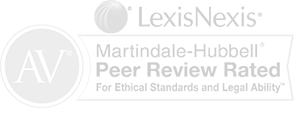
How Small Businesses Can Protect Their Intellectual Property
Business owners don’t need to be told the importance of protecting their tangible assets. However, there is often a knowledge gap concerning the protection of intangible assets such as intellectual property (IP).
Securing intellectual property is crucial for anyone who creates original works, products, or brands. Litigation frequently arises over copyright piracy, trademark counterfeiting, patent infringement, and other intellectual property disputes, especially in the modern context of the internet and global markets.
The Business Trial Group, which resolves intellectual property disputes on a contingency-fee basis, offers entrepreneurs a few tips for legally protecting their work.
Copyrights, Patents & Trademarks
Before they can take measures to protect intellectual property, owners must first take stock of their assets. The major types of IP are copyrights, patents, and trademarks.
Copyrights
Copyright protection can apply to works of authorship that include:
- Literary, musical, artistic, and dramatic works
- Pictorial, graphic, and sculptural works
- Motion pictures and other audiovisual works
- Sound recordings
- Computer software
- Architectural works
Things that cannot be copyrighted include ideas, facts, methods, systems, short phrases, names, titles, and utilitarian language.
Copyright Protection
Copyright law extends only to original works of authorship that are fixed in a physical medium (such as paper, canvas, disk, or computer drive).
Copyrights generally last for the life of the author, plus an additional 70 years. Copyright applications must be made with the U.S. Copyright Office.
Patents
Patent protection applies to inventions.
Under U.S. patent law, anyone who “invents or discovers any new and useful process, machine, manufacture, or composition of matter, or any new and useful improvement thereof” may obtain a patent.
To qualify for a patent, an invention must be:
- Novel (different from other inventions in the public domain)
- Useful (accomplishes something or produces a result)
- Not obvious (from the point of view of an inventor)
Patent Protection
Patent requests are made with the United States Patent and Trademark Office. Filing fees start at a few hundred dollars and with maintenance fees (spread out over many years) cost a couple of thousand dollars or more, depending on the invention and the filing entity. Patents are granted for 15 or 20 years.
A provisional patent application (“patent pending”) establishes an early filing date and gives the inventor one year to apply for a nonprovisional patent.
Were your intellectually property rights infringed upon? Get a free case review.
Trademarks
Trademark law applies to words, phrases, symbols, or designs—or a combination of these elements—that identify and distinguish one party’s product or service from another party’s.
A trademark may apply to:
- Names (including Internet domain names)
- Images, symbols, colors, and logos
- Slogans and phrases
- Product design and product packaging
Competing trademarks are allowed to be similar. The legal test for trademark infringement is likelihood of confusion between two different brands that are commercially related.
Trademark Protection
Not all marks are registrable. The United States Patent and Trademark Office offers this guide about trademark basics, including how to search existing trademarks and factors to consider when choosing a mark.
Trademarks are issued in ten year terms but can generally be renewed indefinitely, as long as the mark requires ongoing protection.
Other IP Considerations
Copyrights, patents, and trademarks are major components of intellectual property protection, but depending on your business, you should also keep the following considerations in mind:
- File for IP protection abroad: Planning on conducting business overseas? You’ll need to register your intellectual property in those countries as well.
- Keep your IP secret: Any information you’d prefer to keep in-house because it confers a competitive advantage is known as a trade secret. Trade secrets lack the formal protection of government registration but may be preferable to a patent or a copyright for some forms of intellectual property, such as customer lists, product formulas, and computer algorithms.
- Utilize confidentiality agreements and nondisclosure agreements: These contracts between you and your employees, independent contractors, partners, investors, and other business partners help keep your IP out of the public domain.
Defend Your IP Rights if Violated
Despite your best efforts to protect intellectual property, it can be stolen or misappropriated — at great cost to your business.
Wealthier parties may illegally use your IP and count on high legal fees to deny you justice. But with contingency-fee litigation from the Business Trial Group, you’ll never be shut out by the courtroom door.
BTG recently represented a small business owner against a giant corporation in a “David vs. Goliath” trademark case and achieved a positive result for our client.
If your copyright, patent, trademark, trade dress, or trade secret was infringed upon, or if a business partner violated a confidentiality or nondisclosure agreement, you may have a case.
Free Case Evaluation
Recent news




